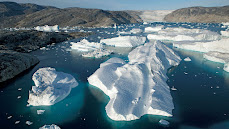Climate change and melting polar ice: effects on day length
The rotation of the Earth is affected by the distribution of mass on its surface. As the polar ice melts, the mass of water is redistributed from the poles to the equator. Because of this, the Earth rotates faster, and the length of the day decreases.
Impact on nature
The reduction of the length of the day will have a number of consequences for nature. They include:
Changes in the behavior of plants and animals: Plants and animals use the length of the day to determine their behavior, such as when to flower or migrate. A change in the length of the day can disrupt these characteristics, leading to changes in the behavior of plants and animals.
Disruption of ecosystems: Changes in the behavior of plants and animals can disrupt ecosystems. For example, if plants bloom earlier in the year, they may be more susceptible to frost damage.
Increased risk of extinction: Disruption of ecosystems can increase the risk of extinction for some species.
Impact on a person
Reducing the length of the day will also have a number of consequences for humans. They include:
Changes in sleep patterns: People use the length of the day to determine sleep patterns. Changing the length of the day can disrupt these signals, leading to changes in sleep patterns.
Increased risk of accidents: Shorter days can lead to an increased risk of accidents. This is because people will have less time to adjust to changing light levels, which can make it harder to see.
Disrupting the Economy: Changes in the behavior of plants and animals can disrupt the economy. For example, if fish migrate early in the year, it may be more difficult for fishermen to catch them.
Decision
There are a number of things that can be done to mitigate the effects of climate change and melting polar ice on the length of the day. They include:
Reducing greenhouse gas emissions: Reducing greenhouse gas emissions will help slow the rate of climate change and the melting of polar ice.
Protecting the polar ice caps: Protecting the polar ice caps will help reduce the amount of ice that melts.
Adapting to change: Adapting to changes that are already happening will help reduce the negative impacts of climate change and melting polar ice.




Comments
Post a Comment